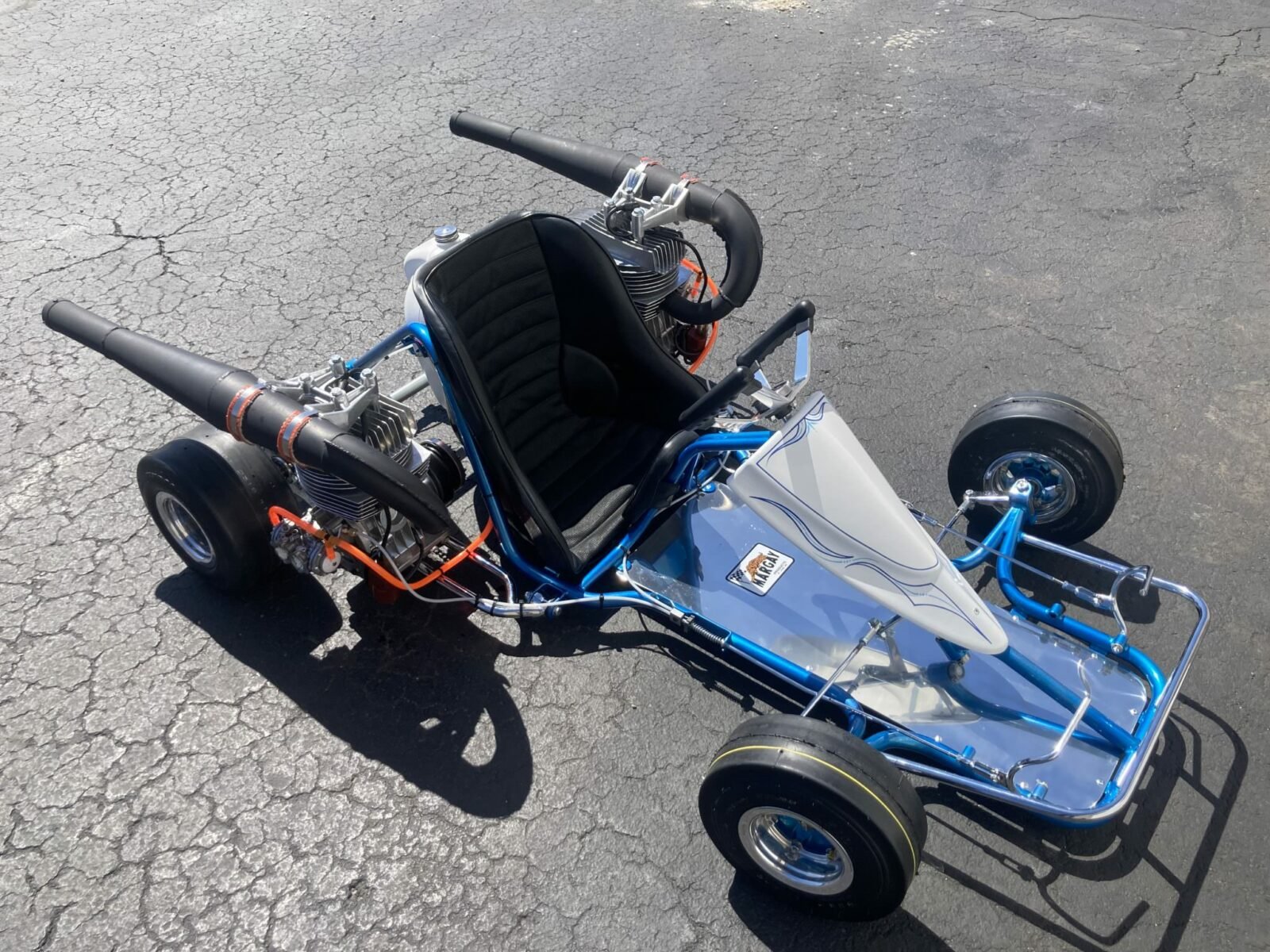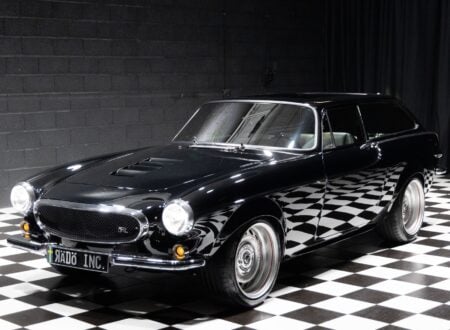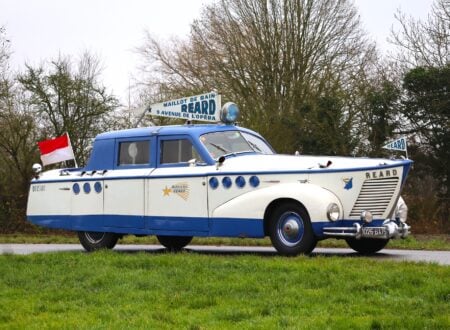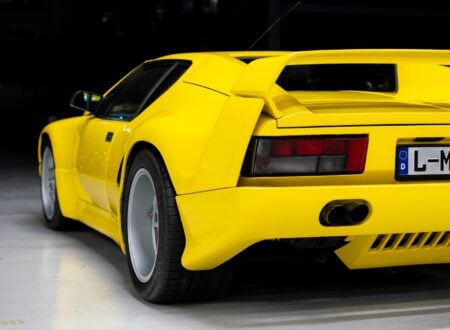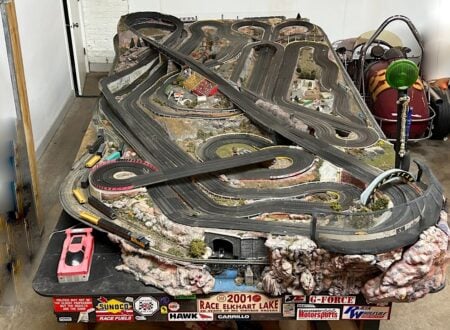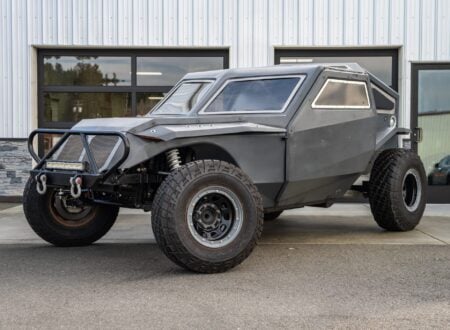This is a twin-engine 1973 Margay Concept Go Kart, it’s powered by dual 135cc I.A.M.E. B-Bomb methanol racing engines which drive the rear wheels, and it benefits from a thorough recent refurbishment.
Outside the world of competitive karting the name Margay is little known, however inside the karting scene the name has become legendary, with many world class racing drivers starting their careers in Margay karts.
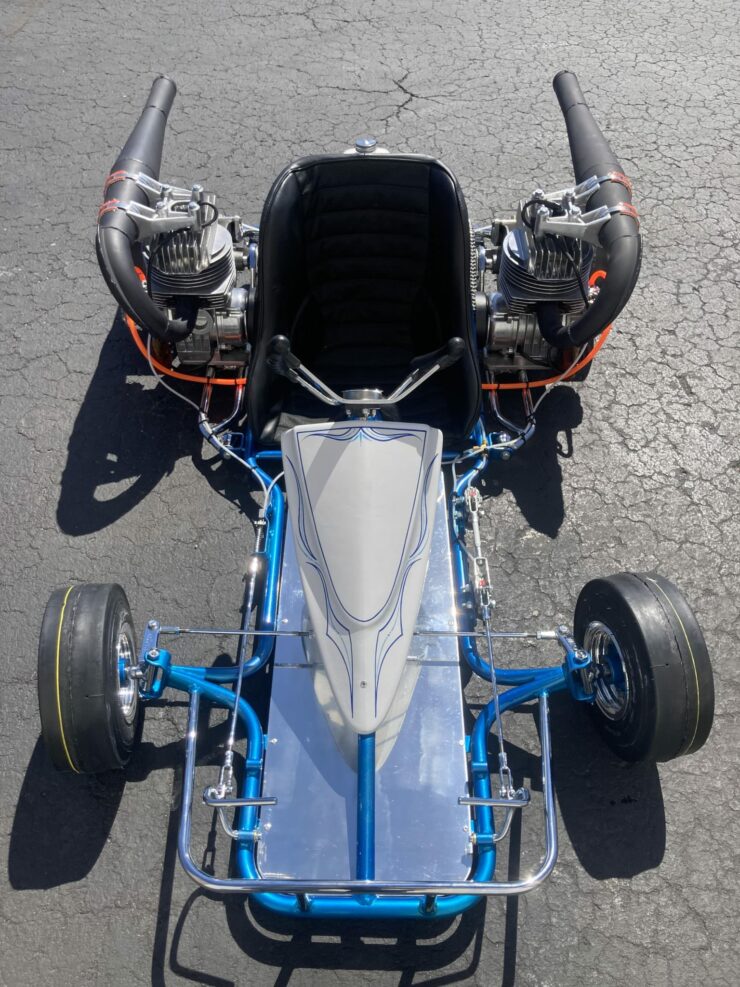

Margay Go Karts
Margay Products Inc. was founded back in 1964 by Elmer Freber, they originally manufactured their popular patented quick-change kart gearbox before buying the King Kart company of Milwaukee in 1966 and starting to build karts themselves from the chassis on up.
As of 2023 Margay has won more races in the World Karting Association (WKA) than any other manufacturer, and they’ve built more than 20,000 kart chassis and counting.
The Margay Concept go-kart is a vintage twin-engined design, the example you see in this article dates back to 1973. Twin-engined karts were nothing new at the time, they were developed as a way to effectively double the power output of a kart using nothing but the engines that those in the world of karting already had on-hand.
The arrangement of a dual-engine go kart is typically always the same, both engines are mounted in the rear behind the driver’s seat on either side of the chassis, and each engine drives the rear axle by way of a chain, sprocket, and sometimes a gearbox.
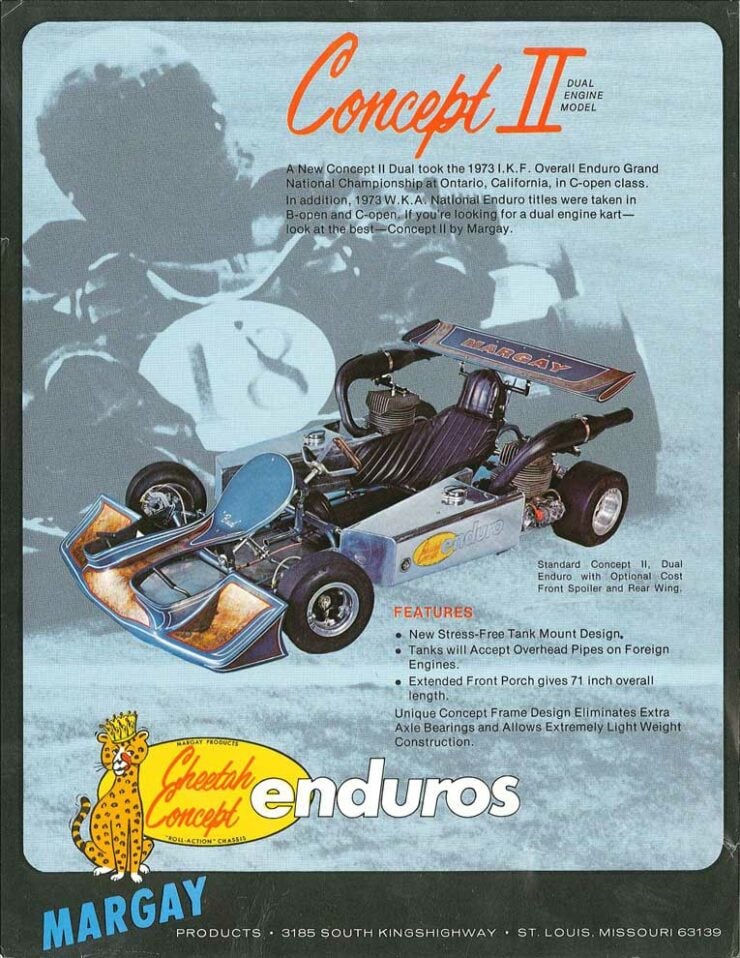

The addition of an extra engine does add to the vehicles curb weight, however it appreciably increases the available power – depending on the gearing and the specific model the top speed can be in excess of 80-100 mph. This is remarkably quick when your backside is just three inches off the asphalt and you have no suspension.
The Twin-Engine 1973 Margay Concept Go-Kart
The go kart you see here is a recently refurbished Margay Concept model from 1973, as you can see it’s powered by dual engines, in this case a pair of fire-breathing 135cc I.A.M.E. B-Bomb single-cylinder methanol engines.
The engines are fitted with Tillotson carburetors, Rupp overhead exhausts, and Margay die-cast engine mounts. They were both rebuilt with replacement bearings and seals by the current owner, and power is sent to the rear axle via twin Burco clutches and chain drives.
This kart has a tubular chromoly steel frame that has been media blasted ad repainted in its current color of metallic blue. Chromoly is the term used to describe a steel alloy that contains both chromium and molybdenum, two of the major alloying elements that also contribute to its name – “Chro-Moly.”
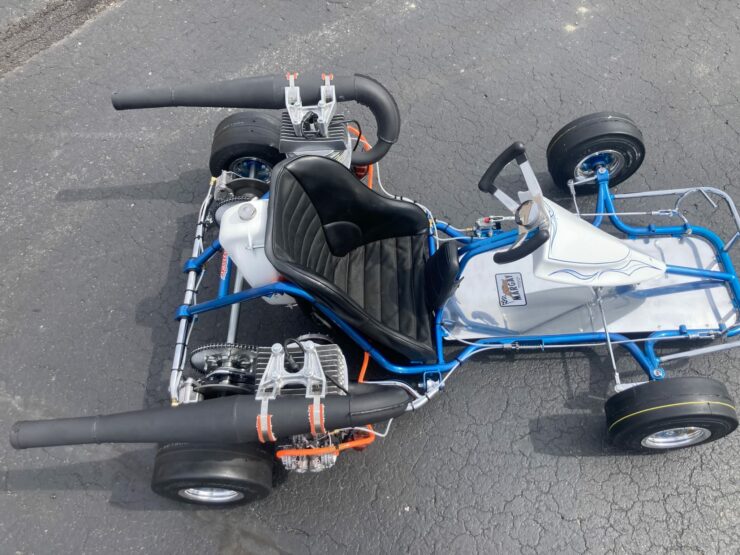

Chromoly alloys are stronger, lighter, and more resistant to corrosion than standard steel so they’re a popular material for use in motorcycle, automotive, and go kart chassis.
The front and rear steel bumpers on this kart have been re-plated in chrome, and the aluminum components have been burnished.
The kart is fitted with a plastic seven-quart seatback fuel tank, a polished floor pan, and a white-painted Nassau panel with two-tone pinstriping by Wisconsin-based artist Mike Barton.
It’s currently being offered for sale out of Oak Creek, Wisconsin on Bring a Trailer and you can visit the listing here if you’d like to read more about it or register to bid.
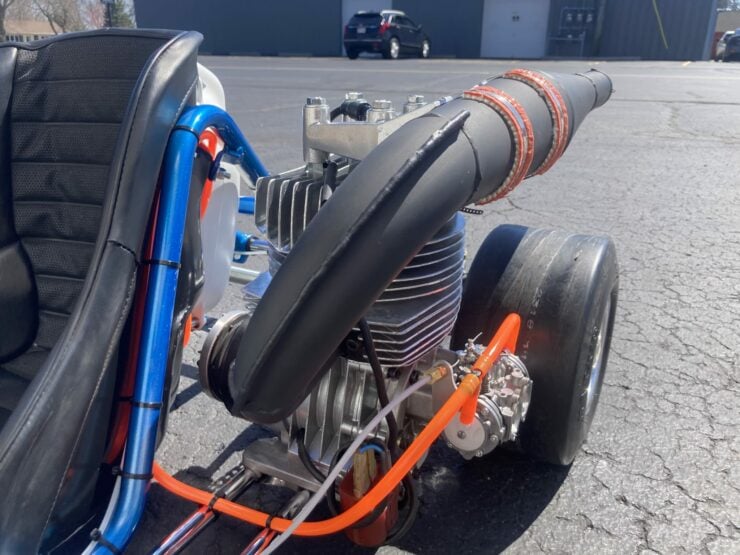
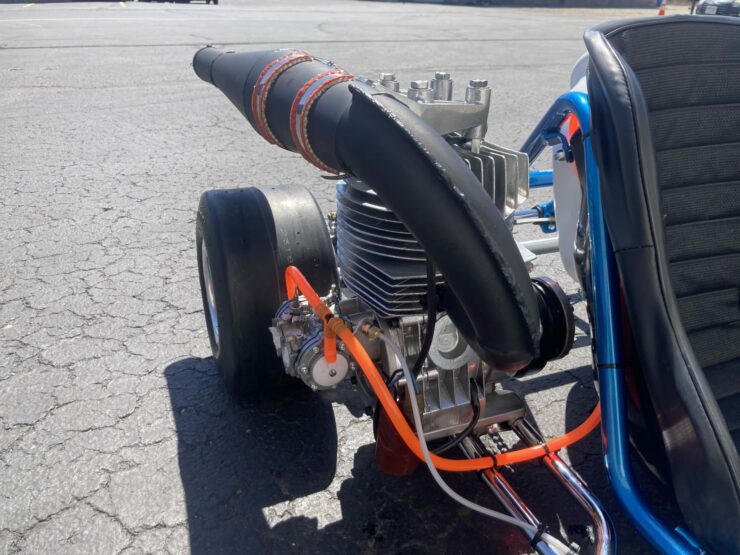
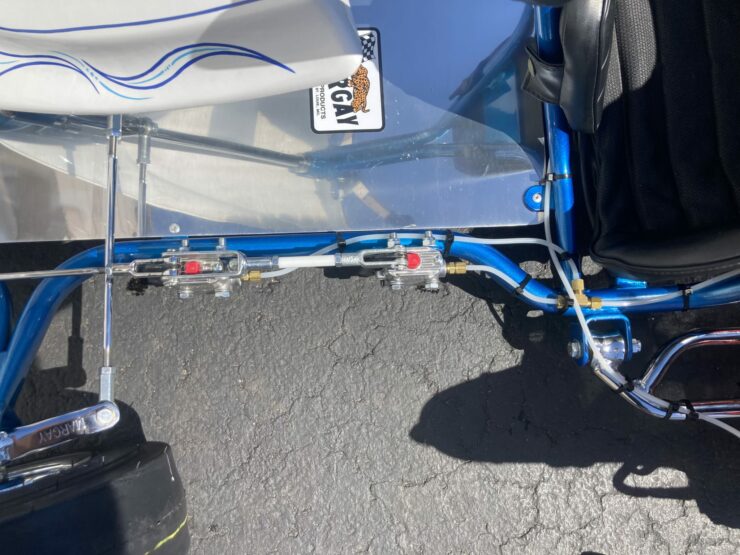
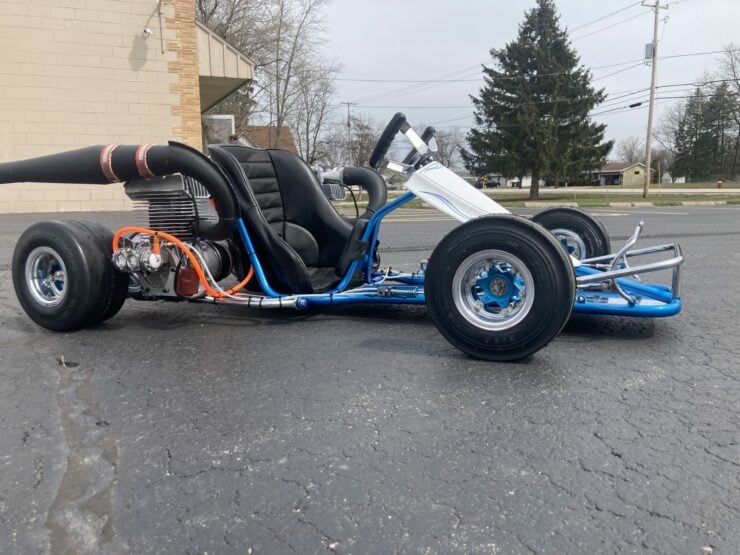
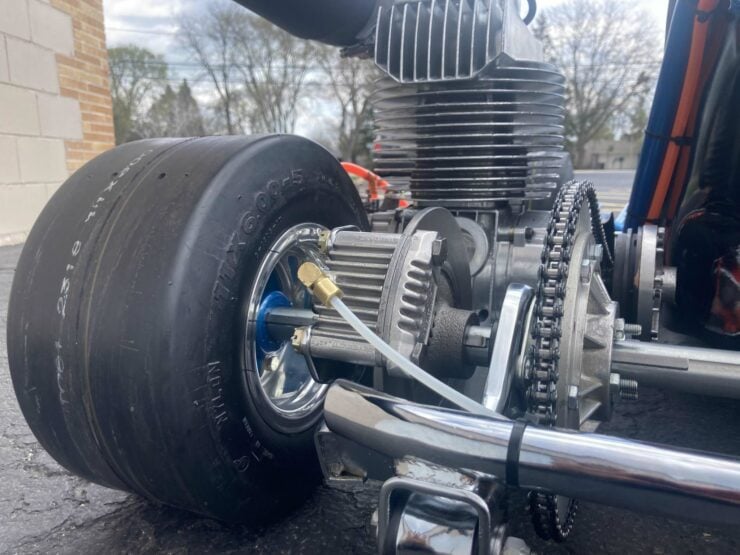

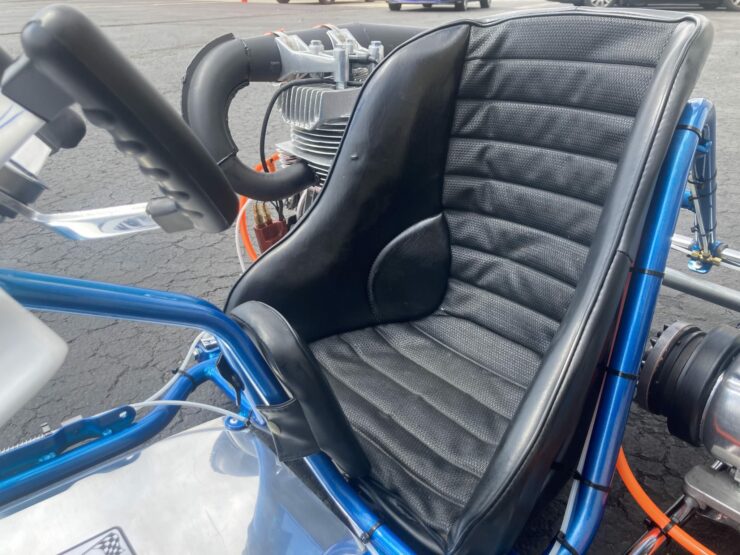
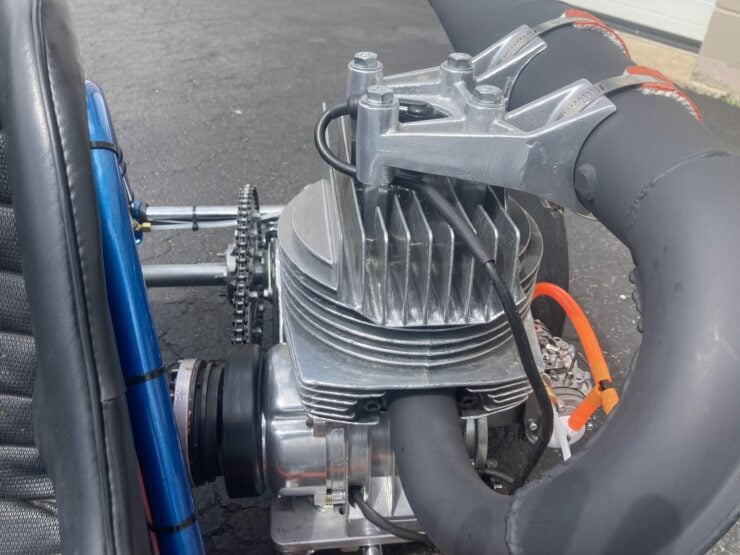
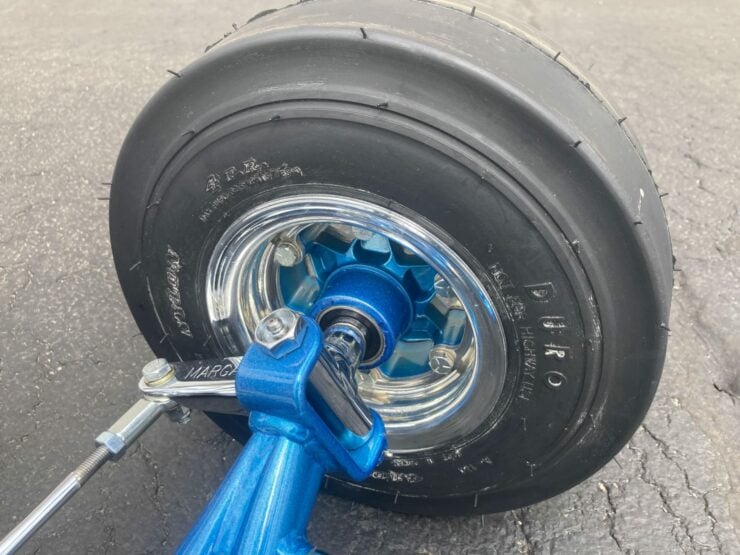
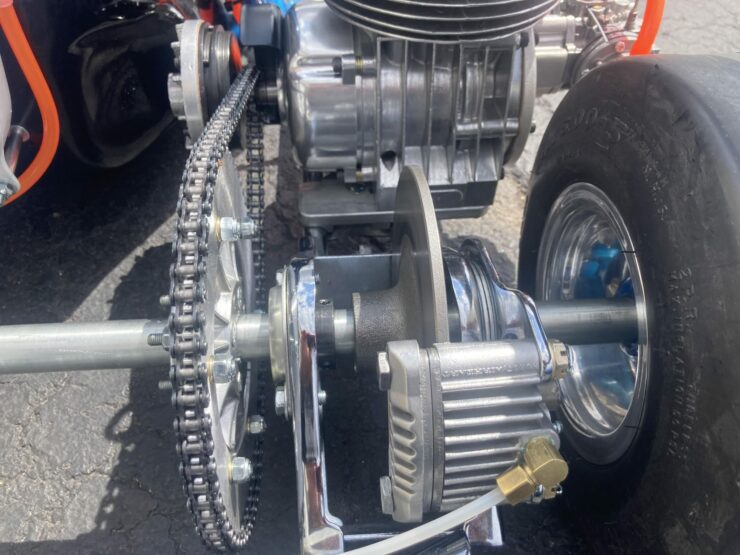
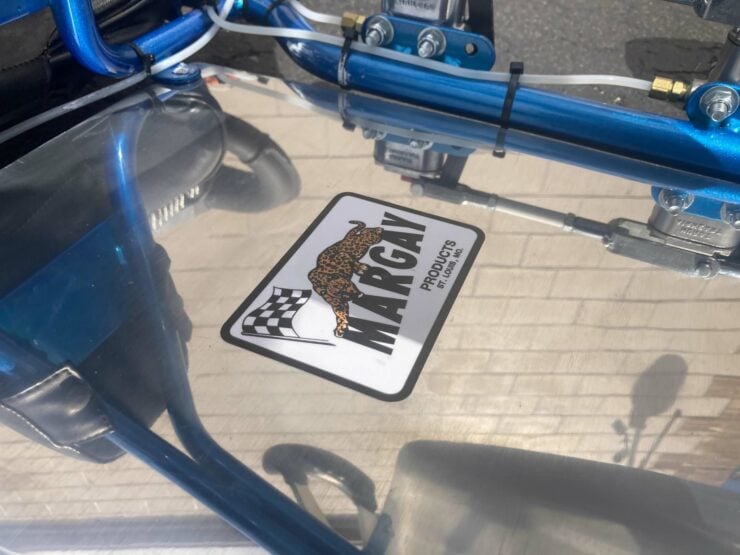
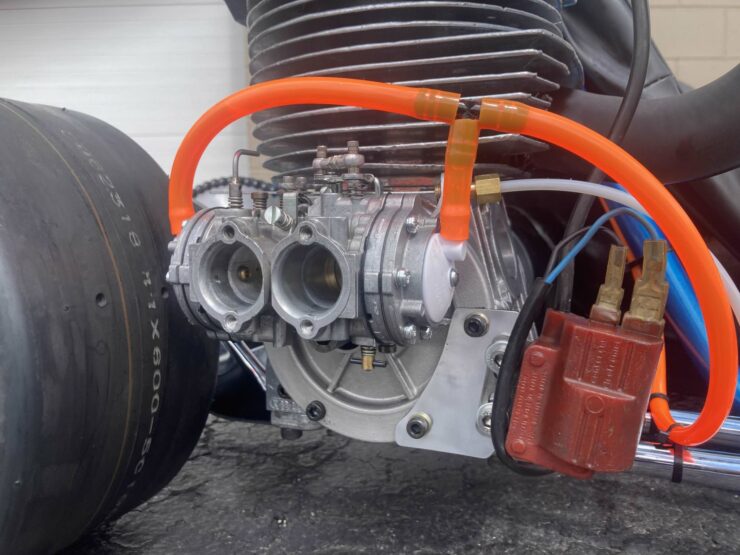
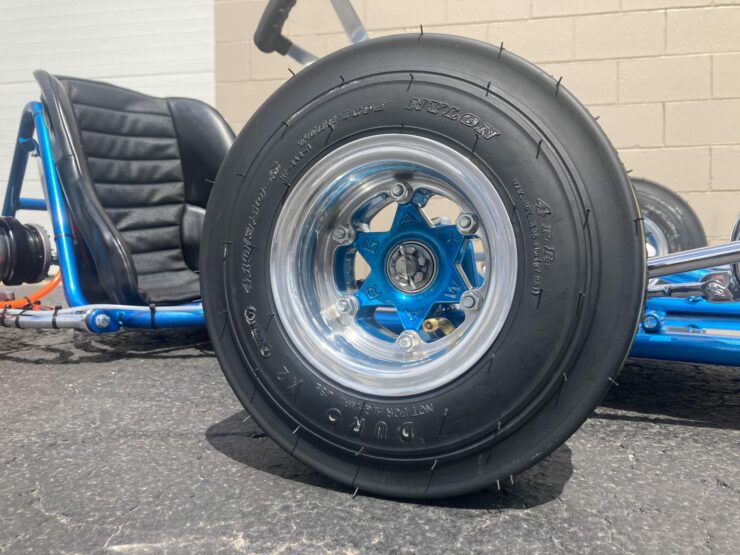

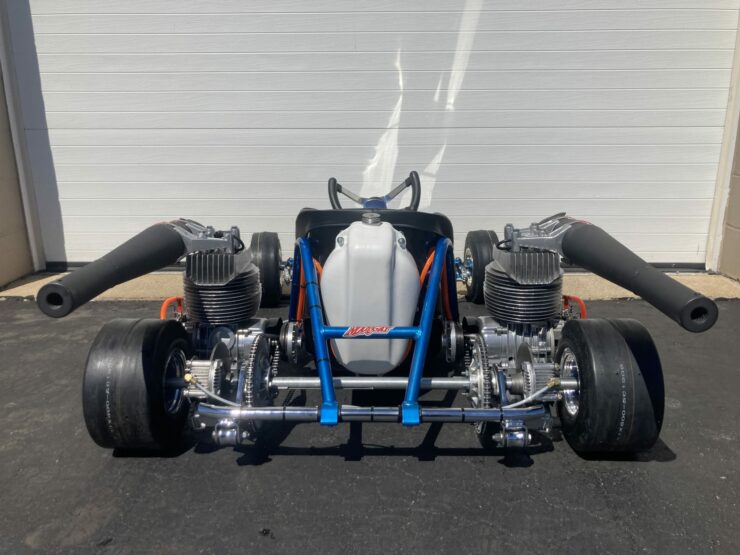
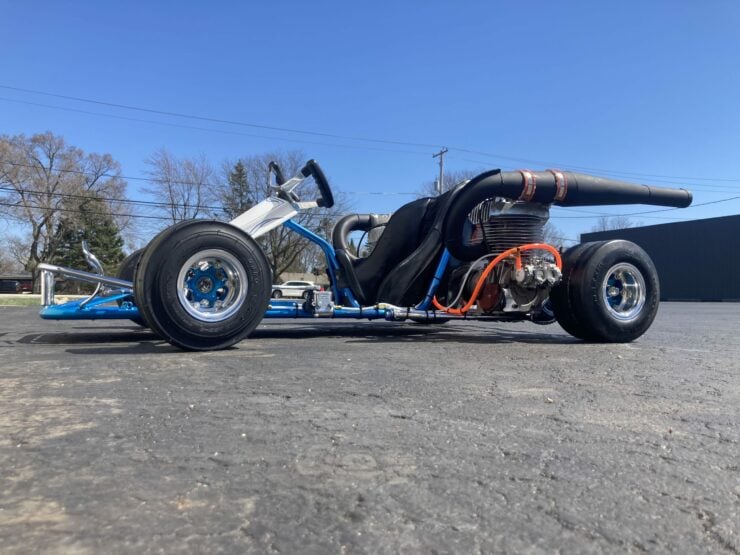
Images courtesy of Bring a Trailer + Margay Products Inc.

